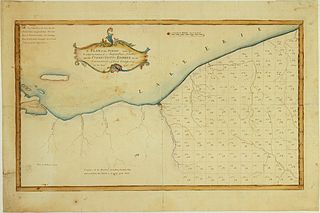Related Research Articles

The Homestead Acts were several laws in the United States by which an applicant could acquire ownership of government land or the public domain, typically called a homestead. In all, more than 160 million acres of public land, or nearly 10 percent of the total area of the United States, was given away free to 1.6 million homesteaders; most of the homesteads were west of the Mississippi River.

The Phelps and Gorham Purchase was the purchase in 1788 of 6,000,000 acres (24,000 km2) of land in what is now western New York State from the Commonwealth of Massachusetts for $1,000,000 (£300,000), to be paid in three annual installments, and the pre-emptive right to the title on the land from the Six Nations of the Iroquois Confederacy for $5000 (£12,500). A syndicate formed by Oliver Phelps and Nathaniel Gorham bought preemptive rights to the 9,600-square-mile (25,000 km2) parcel - larger than six present U.S. states: Vermont, New Hampshire, New Jersey, Connecticut, Delaware, and Rhode Island - in New York, west of Seneca Lake between Lake Ontario and the Pennsylvania border, from the Commonwealth of Massachusetts.
The Desert Land Act was passed by the United States Congress on March 3, 1877, to encourage and promote the economic development of the arid and semiarid public lands of the Western states. Through the Act, individuals may apply for a desert-land entry to irrigate and reclaim the land. This act amended the Homestead Act of 1862. Originally the act offered 640 acres (2.6 km2), although currently only 320 acres may be claimed.
Preemption or pre-emption may refer to:

The Donation Land Claim Act of 1850, sometimes known as the Donation Land Act, was a statute enacted in late 1850 by the United States Congress. It followed the Distribution-Preemption Act 1841. It was intended to promote homestead settlements in the Oregon Territory. The law, a forerunner of the later Homestead Act, brought thousands of white settlers into the new territory, swelling the ranks of settlers traveling along the Oregon Trail. 7,437 land patents were issued under the law, which expired in late 1855. The Donation Land Claim Act allowed white men or partial Native Americans who had arrived in Oregon before 1850 to work on a piece of land for four years and legally claim the land for themselves.
New Helvetia, meaning "New Switzerland", was a 19th-century Alta California settlement and rancho, centered in present-day Sacramento, California.

A scrip is any substitute for legal tender. It is often a form of credit. Scrips have been created and used for a variety of reasons, including exploitative payment of employees under truck systems; or for use in local commerce at times when regular currency was unavailable, for example in remote coal towns, military bases, ships on long voyages, or occupied countries in wartime. Besides company scrip, other forms of scrip include land scrip, vouchers, token coins such as subway tokens, IOUs, arcade tokens and tickets, and points on some credit cards.

The Connecticut Company or Connecticut Land Company (e.-1795) was a post-colonial land speculation company formed in the late eighteenth century to survey and encourage settlement in the eastern parts of the newly chartered Connecticut Western Reserve of the former "Ohio Country" and a prized-part of the Northwest Territory)—a post-American Revolutionary period region, that was part of the lands-claims settlement adjudicated by the new United States government regarding the contentious conflicting claims by various Eastern Seaboard states on lands west of the gaps of the Allegheny draining into the Allegheny, Monongahela, and Ohio Rivers. Under the arrangement, all the states gave up their land claims west of the Alleghenies to the Federal government save for parts parceled out to each claimant state. Western Pennsylvania was Pennsylvania's part, and the Connecticut Western Reserve was the part apportioned to Connecticut's claim. The specific Connecticut Western Reserve lands were the northeastern part of the greater Mississippi drainage basin lands just west of those defined as part of Pennsylvania's claims settlement.

Mount Vernon is an unincorporated community in the town of Springdale, Dane County, Wisconsin, United States.
The Spanish and Mexican governments made many concessions and land grants in Alta California and Baja California from 1785 to 1846. The Spanish Concessions of land were made to retired soldiers as an inducement for them to remain in the frontier. These Concessions reverted to the Spanish crown upon the death of the recipient. The Mexican government later encouraged settlement by issuing much larger land grants to both native-born and naturalized Mexican citizens. The grants were usually two or more square leagues, or 35 square kilometres (14 sq mi) in size. Unlike Spanish Concessions, Mexican land grants provided permanent, unencumbered ownership rights. Most ranchos granted by Mexico were located along the California coast around San Francisco Bay, inland along the Sacramento River, and within the San Joaquin Valley.
Rancho Suscol was an 84,000-acre (340 km2) Mexican land grant in present day Napa County, California and Solano County, California given in 1843 by governor Manuel Micheltorena to General Mariano Guadalupe Vallejo. In a significant land law decision, the land claim was rejected by the US Supreme Court in 1862. Rancho Suscol extended from Rancho Petaluma on the west, south down to the San Francisco Bay and Mare Island and Carquinez Strait, and then to Rancho Suisun on the east. It included present day cities of Vallejo and Benicia.
Claim clubs, also called actual settlers' associations or squatters' clubs, were a nineteenth-century phenomenon in the American West. Usually operating within a confined local jurisdiction, these pseudo-governmental entities sought to regulate land sales in places where there was little or no legal apparatus to deal with land-related quarrels of any size. Some claim clubs sought to protect squatters, while others defended early land owners. In the twentieth century, sociologists suggested that claim clubs were a pioneer adaptation of democratic bodies on the East Coast, including town halls.
The California Land Act of 1851, enacted following the Treaty of Guadalupe Hidalgo and the admission of California as a state in 1850, established a three-member Public Land Commission to determine the validity of prior Spanish and Mexican land grants. It required landowners who claimed title under the Mexican government to file their claim with a commission within two years. Contrary to the Treaty of Guadalupe Hidalgo, which guaranteed full protection of all property rights for Mexican citizens, it placed the burden on landholders to prove their title.
A pre-emption right, right of pre-emption, or first option to buy is a contractual right to acquire certain property newly coming into existence before it can be offered to any other person or entity. It comes from the Latin verb emo, emere, emi, emptum, to buy or purchase, plus the inseparable preposition pre, before. A right to acquire existing property in preference to any other person is usually referred to as a right of first refusal.
In the law of the United States, federal preemption is the invalidation of a U.S. state law that conflicts with federal law.
Rancho Carne Humana was a 17,962-acre (72.69 km2) Mexican land grant in present-day Napa County, California, given in 1841 by Governor Juan Alvarado to Edward Turner Bale. The name means "human flesh" in Spanish. There is speculation as to why the name was chosen. The grant was originally known to the native residents as "Huilic Noma" and also "Colijolmanoc". One naming theory speculates that Bale, in a bit of black humor, twisted "Colijolmanoc" into the similar-sounding Spanish "Carne Humana". Rancho Carne Humana was at the northern end of the Napa Valley, stretching from present-day Rutherford northward to Calistoga, ending at Tubbs Lane and including present-day St. Helena.

Rancho Temescal was a farming outpost of Mission San Luis Rey de Francia, one of the 21 Franciscan missions established in California by Spain during the late 18th and early 19th centuries. The Mission was located on the coast where Oceanside, California is today. The Rancho was settled in 1819 by Leandro Serrano, and became the first non-native settlement within the boundaries of what would become Riverside County, California.
The Supremacy Clause of the Constitution of the United States, establishes that the Constitution, federal laws made pursuant to it, and treaties made under its authority, constitute the "supreme Law of the Land", and thus take priority over any conflicting state laws. It provides that state courts are bound by, and state constitutions subordinate to, the supreme law. However, federal statutes and treaties are supreme only if they are implemented within the parameters of the Constitution.

Paul Wallace Gates was a professor of history and general historian who is widely considered to be the foremost authority on the history of federal land policy in the United States. Gates wrote 10 books and 75 academic articles, and his magnum opus was History of Public Land Law Development.
The misappropriation doctrine is a U.S. legal theory conferring a "quasi-property right" on a person who invests "labor, skill, and money" to create an intangible asset. The right operates against another person "endeavoring to reap where it has not sown" by "misappropriating" the value of the asset. The quoted language and the legal principle come from the decision of the United States Supreme Court in International News Service v. Associated Press, 248 U.S. 215 (1918), also known as INS v. AP or simply the INS case.
References
- ↑ Ritchie 1858, pp. 162–163.
- ↑ Johnson 1951, pp. 162–163.
- ↑ Gates 1969, p. 321.
- ↑ Gates 1969, p. 326.
- ↑ Gates 1978, pp. 12–13.
- ↑ Gates 1969, p. 312-314.
- ↑ Treat 1910, pp. v–vi.
- Attributions
- Ritchie, James S. (1858). Wisconsin and Its Resources; With Lake Superior, Its Commerce and Navigation. Chicago: W. B. Keen. pp. 162–168. Retrieved November 14, 2013.
- Johnson, S. Lyle (1951). "Fight for the Pre-Emption Law of 1841" (PDF). Arkansas Academy of Science Journal. 4: 165–172. Retrieved January 27, 2013.
- Gates, Paul W. (1969). "Frontier Land Business In Wisconsin". Wisconsin Magazine of History. 53 (Summer). Retrieved January 27, 2013.
- Gates, Paul W. (1978). Land Policies in Kern County. Bakersfield, CA: Kern County Historical Society. OCLC 5154193.
- Treat, Payson Jackson (1910). The National Land System, 1785-1820. New York: E. B. Treat & Company. Retrieved February 21, 2013.